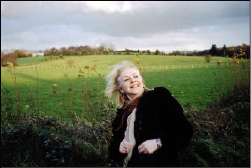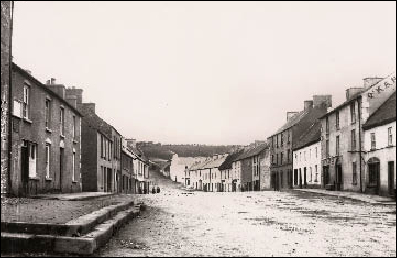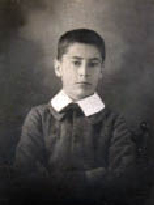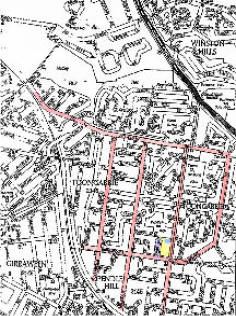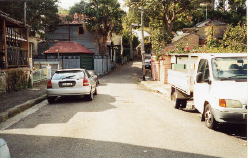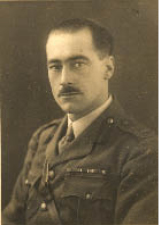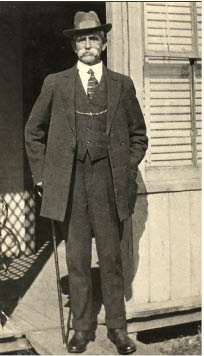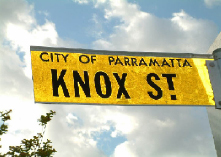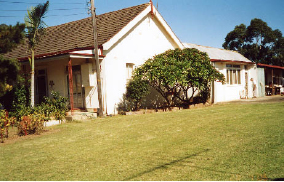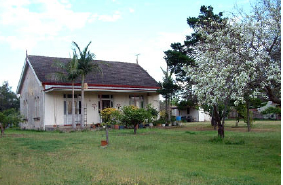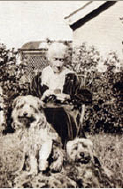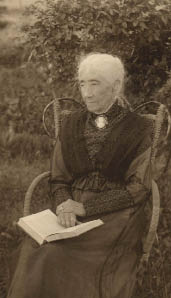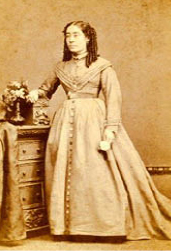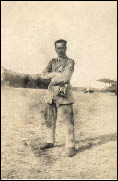The Knox Chronicles
Joseph Knox and his Family
By
Jane
Knox and Janet Fearby
 Knox Farm in
Kirlish - Drumquin Co Tyrone Northern Ireland
Knox Farm in
Kirlish - Drumquin Co Tyrone Northern Ireland
Knox Home Montargis in Toongabbie
NSW Australia
Contributions
by:
Val
Fearby, Kevin Hilferty and Pam O’Connor
Also Margaret Knox Alexander, Dianne
Grigg,
Sonia Grigg and Elizabeth Thompson
Based on original work
“The Knoxes and the Newcombes”©
By Peter Knox
Download
PDF
Introduction - Jane Knox
Great Grandaughter of Joseph
Knox
Jane
Knox-Kiepura was born in Toorak, Melbourne, Australia to Peter Knox and
Monica Knox (nee Newcombe) and grew up in England, Spain and Portugal.
She moved to Washington D.C. USA in 1968 where she worked at the World
Bank. In 1975 she moved to Paris, France returning to the United States
in 1980. She lives in Manhattan and New Hampshire with her husband
Marjan Kiepura.
Jane
received her Bachelor of Arts Degree in International Studies, Magna
Cum Laude, from Marymount Manhattan College in New York City. She now
works as Vice President of an international aerospace company. As an
avid researcher of her family history she was delighted to find that
her cousin Janet Fearby shared the same passion. The initial goal was
to complete Peter Knox’s work that he had started in 1994 but was
unable to finish before passing away in 1998. Since 1998 the internet
has opened up whole new resources unavailable in those early days and
Janet and Jane have pooled all their resources to complete the “Knox
Chronicles”.
Janet
and Jane are related through their great-grandfather Joseph Knox.
Joseph married Elizabeth Jane Drew, they had eight children. Janet’s
grandmother was Lilian Violet, the eldest child and Jane’s grandfather
was Errol Knox, the youngest. Pamela Knox O’Connor, Errol’s daughter
and sister to Peter Knox, has been the constant inspiration to complete
the work. She has been tireless in her support. Janet Fearby’s
biography appears in these Chronicles.
Joseph
Knox was born in 1845, emigrated to Sydney, Australia in 1863. He
married Elizabeth Jane Drew in 1870. He lived in Montargis,
Wentworthville NSW with his wife and family from the early 1890’s until
his death in 1919.
Photo of Jane Knox during trip to
Drumquin in December 2006.
Knox homestead in background.
|

Photo leaving Silver
Birch Hotel Omagh Co Tyrone
|
The Knox Chronicles
Joseph Knox and his Family
Peter Knox wrote “The
first identifiable Knox is my grandfather Joseph who was born in 1845
in Omagh, County Tyrone, in part of what is now known as Northern
Ireland.”
This
was all the information my father had available, which had been passed
on by Heather “Bill” Fearby, his cousin, the daughter of John Fearby
and Lilian Violet (nee Knox). However, thanks to the great wealth of
information available on the internet and through the incredible work
done by the archivists in New South Wales, and Janet Fearby, co-author
of these chronicles,we are able to give significantly more detail about
Joseph’s origins and his life.
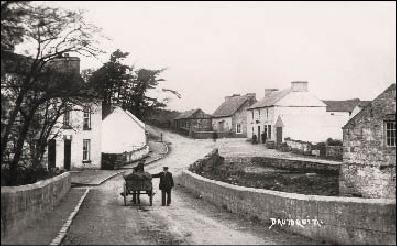
Photos of Drumquin in the
early days.
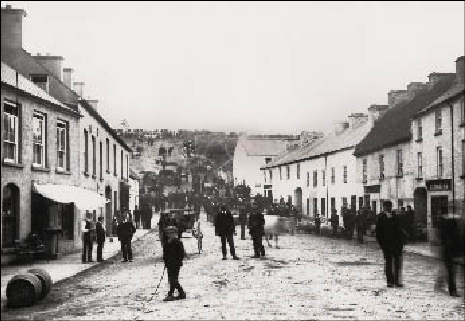
Drumquin Market Day - 19th
Century
Joseph Knox
The early days in the hills of
Drumquin,
Co Tyrone
Joseph
Knox was born in 1845 in the midst of the potato famine, to Samuel and
Margaret Knox (nee Frame). He was born in a small farming community in
the Townland of Kirlish near Drumquin, Co. Tyrone, Northern Ireland.
Drumquin is close to Omagh, which is the nearest major town. It appears
he was the youngest of at least four children. It is unlikely that we
will ever know the exact date he was born, it is even conceivable that
he did not know this himself. Certainly the age he gave for himself at
the time of the birth of each of his own children was inconsistent with
his age at the time of his marriage. However, 1845 is the most probable
year. We do know for sure he was born between 1844 and 1846. A brief
glimpse into the life and world he was born to in Drumquin can be
gleaned from the following account written by Lieutenant William Lancy
in a letter to J. R. Ward in 1834.
This
survey carried out by a young English army officer in 1834 paints a
picture of Drumquin as a very poverty stricken place. This was of
course before the terrible potato famine of the 1840’sso one can only
imagine the plight of the poor inhabitants by the time Joseph was born
in 1845.
|
“The
northern, southern and western parts of the Parish are wild and
mountainous dominated by a mountain range known locally simply as the
Longfield Hills. There are several picturesque and wild glens, the
principal one being Carrich-a-ness which is situated 2 miles to the
west of the town of Drumquin. The other glen is situated 3 miles to the
west of Drumquin and is called Slevin glen. There are numerous water
falls which combined with the ruined bridge and the wildness of the
glen, have a very picturesque effect.
Two
streams run through the parish, namely the Fairy Water and the Drumquin
Water. The Parish is well served by fresh springs and if anything has
too much water. The principal lakes in the Parish are Lough Bradan,
Lough Lee and Lough Corr. The shores of these lakes are soft and boggy.
Local tradition has it that these lakes are inhabited by wild horses.
The
only road of consequence passing through Longfield West is the road
from Londonderry to Enniskillen, which passes through the town of
Drumquin.
Drumquin
is a poor looking place; the houses mean and out of repair. It has a
weekly market on Thursdays and a daily foot post but has no trade of
any kind to enrich it.
The
dress worn by the inhabitants differs in no way from that of the
surrounding Parishes. Their diet consists principally of potatoes and
porridge made of oatmeal and sometimes a dinner is varied by the
addition of a little bacon or greens. Their manners are generally civil
and obliging. They complain much of the short leases and high rents and
with justice (or the lack of it), if we may judge from the squalid and
poverty stricken appearance of many of them.”
|
JOSEPH’S PARENTS
Samuel Knox (born between
1800–1810) and Margaret Frame
All
we know about Samuel Knox is that when Joseph Knox’s brother, John Knox
got married on 21st October 1862 at the Presbyterian Church, Drumquin
to Elizabeth Mellon, Samuel Knox, his father, was listed as “farmer
from Kirlish”. The witness was his cousin Andrew McCrea who may well
have been his closest relative (and a grandson of Joseph Knox). By this
time, great-grandfather Joseph had probably already set off to Plymouth
to find his way to Australia.
Samuel
Knox was an Ulster Scots whose forebears had settled in the area like
so many others in the 18th century. Searching through the very scant
records that still exist in Northern Ireland and our research, it can
be concluded that Samuel Knox might well be the son of Joseph Knox and
Isabella of Camus, Strabane. Strabane is located in the North West of
County Tyrone and
straddles
the border with County Donegal. We do know for certain that Samuel Knox
had at least one brother, who was older, called Joseph Knox. This
Joseph had married a Jane Thompson. This is all clearly documented in
the Australian records. The only other information we have so far is
that both Samuel and Margaret were listed as “dead” by the time Mary,
their eldest daughter, emigrated to New South Wales on the Fairlie arriving on 29th April 1863.
Joseph further certified this when he
emigrated to Australia on the Ironside
on February 9th 1863 arriving in Australia on May 9th three months
later. However, despite checking on all available Knox records there
are no match-ups with any Samuel or Margaret Knox who could be Joseph’s
parents. It is possible they died along with so many between 1845 and
1850. We are not able to verify where they were born, married or died.
JOSEPH KNOX’S
EARLY LIFE
It
is clear that Joseph Knox grew up on the land. In fact there was a
Joseph Knox, most likely an uncle to Joseph or possibly his
grandfather, who had fourteen arable acres and six acres of bog that
were leased by the Echlins. In the Tithe Collection Book for Longfield
West, Townland of Kirlish, ref Fin/5A/204A dated 21st September 1826
the amount due was a tithe of 14 shillings 11 pence. Because it was so
difficult to make a living from the land we see Joseph’s older brother
learning the trade of a “shoemaker”. Perhaps where Joseph may have had
an advantage over his parents was that in 1845, and certainly by the
time he reached school age, Joseph was eligible for the National System
of education, introduced in 1840.
On
a recent trip to the Knox Farm in Kirlish from the main center of
Drumquin I noticed it was a 15-20 minute drive by car along quite a
steep hill. The trip by foot would be over an hour in good weather. I
tried to imagine a six year old making this round trip every day in the
bitter wind and rain. However, records reveal that Joseph Knox could
read and write extremely well and had obviously received an excellent
education.
The
Knox family would have attended the Drumquin Presbyterian Church where
his brother John Frame Knox got married. How else he spent his
childhood is unclear. In those days children were often required to
stay at home to help with the farm, especially during the harvest.
There is no question that Joseph must have enjoyed very good health to
withstand such a rigorous lifestyle. School, the Church and the farm
probably dominated his life. Kirlish and Drumquin and the adjoining
Townlands and Parishes were very tight-knit communities and it emerges
later on in these Chronicles that the Knox cousins remained very close
in their new homeland in New South Wales.
JOSEPH KNOX’S
SIBLINGS
We
know that Joseph Knox had at least one brother and two sisters. This
information is based on New South Wales Passenger Lists and NSW Birth,
Marriage and Death Certificates. Thefollowing is what we know about his
siblings.
Mary Knox
Mary
was born c. 1839 in County Tyrone as stated in Australian immigration,
marriage and death records. She emigrated to Australia on board the
Passenger Ship the Fairlie
arriving in New South Wales on 29th April 1863 (see Reel 2139, 2481).
The Passenger List shows her age as 23, a “house servant” from Kirlish,
County Tyrone. Unlike the rest of her family she shows her religion as
Church of England and not Presbyterian. Her “state of bodily health,
strength and probable usefulness” was listed as “good”. It stated she
could “read” only, indicating that she was unable to write. She was
“assigned” to her cousin, Andrew Knox of Charles Street Sydney who paid
₤3.00 as sponsor. (Joseph Knox was later living at 31 Charles St. so
perhaps this was Andrew’s address). The other passengers on the Fairlie appeared
to be predominantly female, including other young ladies from County
Tyrone. There is no indication that any of them are related although
there was a young lady sponsored by a McBaron who may have been related
to Mary’s future husband. On the Passenger List, Mary indicates that
both her parents were deceased.
Mary
married John Baron (also listed as McBaron), a bachelor, on 4th
February 1873 at Elizabeth Street, Sydney according to the rites of the
Presbyterian Church. The officiating Minister
was James Fullerton. She shows her age as 33 at the time of marriage
and her birthplace as Ireland. No occupation is shown. John Baron was a
farmer aged 39 from Ireland. The witnesses were Hugh McBaron and
Margaret J. Bell.. It is strange that none of herimmediate family were
witnesses.
Mary
died on 31st December 1896, aged 57 at “Fern Vale” near Robertson. Her
parents are shown as Samuel Knox, farmer, and Margaret Fraim. It also
shows that she had been 31 years in NSW and 35 years old at time of
marriage (note age shown on marriage certificate as 33). Here the name
Baron is shown as McBarron. Mary was buried at the Church of England
Cemetery in Robertson by a Wesleyan Minister. Mary and John had no
children.
It
is not really known how close Mary might have been to her siblings.
More research remains to be done on her early life in Australia.
John Frame Knox
John
Frame Knox was born in County Tyrone, Ireland c. 1841 to Samuel Knox
and Margaret Frame. He married Elizabeth Mellon, daughter of William
Mellon of Tullyard and Sarah Knox at the Drumquin Presbyterian Meeting
House on 21st October 1862 – copy of this marriage certificate is
available, as noted in Omagh Book 1 p. 58. At the time of his marriage
he is listed as “shoemaker”. “John Knox full age, bachelor, shoemaker
of Kirlish, son of Samuel Knox, farmer of Kirlish in the presence of Andrew McCrea
and William Watson.” Andrew McCrea appears
to be the brother of Ann McCrea married to a Joseph Knox, farmer, son
of Joseph Knox of Slevin. Because of the close association with McCreas
later on in Australia, there is a strong possibility that great-great
grandfather Samuel had a brother Joseph (this theory is reinforced by
Australian records) thus allowing for the possibility that our Joseph’s
grandfather was Joseph Knox, farmer of Slevin.
John and Elizabeth emigrated to Australia
on the Peerless
in 1866, arriving in New South Wales on 6th June 1866. He travelled
with two infants Isabella, aged 2 (she became Eliza B or Lizzie B) and
Margaret who was born on 16th June 1865 in Drumquin, Co. Tyrone,
Ireland. He was listed as “shoemaker” from Drumquin, County Tyrone. His
religion was listed as Presbyterian and records show that he could
“read” and “write”. His wife, Elizabeth, could “read” only. They were
both listed as aged 25. His parents, Samuel and Margaret Knox, were
both listed as deceased. Elizabeth listed her mother (Sarah Knox
Mellon) as deceased and her father, William Mellon as living in Tyrone.
Most interesting of all is that he was sponsored by Joseph Knox of 31
Charles Street, Sydney, his brother. Charles Street was also the
address of their cousin Andrew Knox. This is the area where Joseph Knox
would later invest in real estate and no doubt where he was living when
according to Peter Knox, he
had his job as an upholsterer in the Civil Service Stores. John Frame
Knox was listed as Bootmaker in Gladesville in 1890. He died on 25
September 1895, aged 55 years, in Camperdown, NSW
The Children of John and Elizabeth
Isabella - (born c. 1864 in County Tyrone) aged 2
when her parents emigrated on the Peerless
in 1866 (see reels 2140, 2484); see Lizzie B or Eliza B in later NSW
death certificates. A great point of interest is the name Isabella
which reinforces the possibility that she was named after her
grandmother.
Margaret was
born on 16th June 1865 - this is the first of many sad stories.
According to her death certificate she died on 6th January 1886, at
Hawlong Station. She was documented as Margaret Knox, female servant
aged 20 years and the cause of death was accidental drowning. Her
father was registered as John Knox, Shoe Maker. The certificate was
signed by Joseph Lenox, who was apparently no relation. A Magisterial
Inquiry was apparently held. Particulars of Registration, 9th January
1886, Hay. Margaret was buried on 9th January 1886 at HayCemetery by
Geo. H. Harrison, Undertakers. At the time of her death she is shown as
“unmarried”, place of birth was Ireland and she was listed as having
lived fourteen years in
the
Australian colonies. We still need to investigate and research the
story of Margaret and the circumstances of her death. The above
information was obtained from the official deathcertificate
Registration No. 1886/006781. It is sad that she seems to have died
without any family around her.
When
Peter Knox was in communication with Heather Fearby, granddaughter of
Joseph Knox, she related the story of Margaret drowning at Hay,
believing Margaret to have been a sister of Joseph, not a niece.
However, the evidence is now clear. She was the second daughter of John
Frame Knox and Elizabeth Mellon Knox, who came to a very tragic end.
Sarah Knox was born
in 1867 and died aged 9 months on 1st April 1868
at Campbell
Street. The informant was Andrew Knox who registered himself as
“uncle”, of Charles Street. This is strange, as we now know that Andrew
Knox was a cousin, not an uncle. It is interesting to note however,
that he was still living at Charles Street in 1868, unless it is a
different Andrew Knox, who may well have been an uncle or great-uncle,
since Sarah Knox’s grandmother was called Sarah Knox and may have had a
brother Andrew. As mentioned earlier, this street seemed to be the Knox
family headquarters in that period of time.
Edith Rebecca
was born in 1869 - she married Charles Alfred Weston on 1st June 1893
at St. Paul’s Presbyterian Church, Balmain - a witness was our
great-aunt Aurora Myrtle Knox, daughter of Joseph Knox and Elizabeth
Jane Drew Knox. Edith died on 30 September 1943 at Morrison Road,
Gladesville. Her five children were:
Charles b. 1894
Gladys b. 1896
Stanley A b. 1897
Milton b. 1898
Jean b. 1902
Emily - born 1871 - died aged 16
months on
27th August 1872 at Belvoir Street, Strawberry Hills.
Samuel Joseph - born
June 1873 - died on 21st August 1873 at Belvoir Street, Strawberry
Hills.
Louisa Jane - born June 1873 -
died 1873 (twin of
Samuel Joseph).
Emil - born 1874 - died 1875.
Amy - born 1876 - died 1882.
John Frame Knox died on 25th November 1895 at
Prince Alfred Hospital, Camperdown - his
occupation was listed as “Bootmaker” and age given as 55 years , living
28 years in NSW Both dates confirm approximate date of birth as 1840.
He was survived by two children, Lizzie B aged 31 - see Isabella on the
Peerless
in 1866 and Edith Rebecca - born in NSW in 1869. Informant of his death
was his brother Joseph Knox. At time of death, he shows he was married,
aged 22, Elizabeth Melon (see below) - with one “l’. Certificate shows
1 male child, 6 females deceased - this is probably wrong as Margaret
may not have been included and it should read 7 females deceased.
However, there could also be a wrong entry and one Surname: Knox should
read: Frame.
Elizabeth Knox (née Mellon) wife of
John Frame Knox was the daughter of William Mellon
of Tullyard and Sarah Knox. Her death certificate states that she was
born in County Tyrone, Ireland, and that she had been in the Colonies
53 years - A curious entry states she was 30 at time of marriage making
her 8 years older than John Frame. However, age given on the Peerless
in 1866 is 25 years - same age as her husband. Elizabeth Knox died on
16th December 1918 at the home of her granddaughter Edith P. Weston at
Reigate in Ross Street, Gladesville. She is buried at the Presbyterian
Rookwood Cemetery.
Sarah Knox (1843-1918)
Sarah
Knox was born in Drumquin, County Tyrone, c.1843 to Samuel Knox and
Margaret Frame - no record exists of her birth. She embarked on the
Hornet, Passenger Ship, which arrived on 25th January 1865 in NSW This
is a very curious situation as there were two Sarah Knoxes from
Drumquin, travelling together. Both were “house servants” and show
their
native place as near Drumquin. Sarah Knox aged 19 - House Servant -
from Drumquin, County Tyrone, Ireland, daughter of Joseph and Jane Knox
- father dead, mother living Drumquin - religion Presbyterian - could
read - relative in Australia - sister Isabella Knox in Service in,
Sydney. They were both sponsored it appears, by sister Isabella of
Sydney. Sarah Knox aged 20 - ditto for everything - except that she
could read and write. This scant information creates a problem -
obviously one of the Sarahs is the daughter of Samuel and Margaret -
sister of Mary, John and Joseph - and is remembered by the family as
“Aunt Tare” who lived with Joseph Knox our great grandfather. It is
interesting that different rules were applied according to ships. It
didn’t seem to bother anybody that there could be two sisters one year
apart with the same name. The other Sarah, sister of Isabella and
daughter of Joseph and Jane Knox (née Thompson) is also sister of
Andrew and Samuel. An interesting note is that here again all the
passengers on the Hornet appeared to be female. No mention is made of
sponsorship fee. Sarah Knox (Aunt Tare) died on 22nd September 1918
aged 75 years - indicating date of birth as 1843. Her death certificate
states she had been in the Colonies 52 years, confirming the 1864/1865
passage.
Sarah Knox (Aunt
Tare) never married but no doubt worked very hard as she lived with her
brother Joseph and one assumes helped her sister-in-law Elizabeth Jane
bring up the eightchildren including our grandfather Errol. In 1884,
Sarah is undoubtedly the “Miss Knox” whois the informant of her
nephew’s birth, along with her brother’s mother-in-law, Mrs. Annie
Drew.
During
this time the Knox family was living at 95 Hereford Street, Glebe,
where Errol was born. Soon afterwards the family moved to Montargis at
Binalong Road, Wentworthville, Shire of Blacktown where Sarah died.
Errol’s father Joseph certified the death certificate. Sarah is buried
at the Presbyterian Cemetery, Western Road in Parramatta. Unfortunately
we do not have any photos of her that we know of. Cousin Margaret
Alexander who is the daughter of Joseph Milton H. Knox, son of Joseph
Knox, was our source of information about the existence of Aunt Tare.
Up until then we had misidentified the witness on Joseph’s wedding
certificate as “Frank” and it was a while before we realized there was
no brother Frank but a sister Sarah. We do not know why Sarah is buried
at the Presbyterian Cemetery in Parramatta and not at Rookwood with her
brother and cousins.
Joseph Knox Sets Off To Australia
When
Peter Knox wrote his account of his grandfather, he was not aware that
Joseph embarked to Australia completely on his own accord. It emerges
that Joseph Knox embarked on the Ironside
on February 9th 1863 and arrived in New South Wales on
May 9th
1863. His name appears on the Passenger Listing as John Knox, Bootmaker
aged 22 years. Whether he deliberately assumed his brother’s name, age
and profession on the emigration we do not know. However, in the
immigration the age appears as 18. Perhaps his cousin Andrew Knox had
arranged sponsorship for John but in the meantime he got married and
Joseph took his place. Joseph would have been on 18 or 19 when he set
out, his sister had gone out a few months earlier, also sponsored by
cousin Andrew Knox of 31 Charles Street Sydney. The “Particulars” of
the Vessel showed the following:
Name of
Vessel:
Tonnage of Vessel:
Number of Deaths on the
Voyage:
Number of births:
Date of Departure from
Plymouth:
Date of Arrival at
Sydney:
Number of days on Voyage:
Contract price for
Statute Adult:
Master’s Name:
Surgeon’s Name:
The ship carried:
|
Ironside
898 tons
1 Female (this was Mary Reidy aged 18)
1 female, 1 male
9th February 1863
9th May 1863
89 Days
₤14.13.5
Captain Cuthbert Vaux
J. P. Chunnell
22 Males – Married
26 Females -Married
137 Males – Unmarried
127 Females – Unmarried |
Including
children and adults the total number of emigrants landed was 340. The
Manifest reads: 340 Souls equal to 322 Statute Adults. It does appear
that Joseph arrived as a Government Immigrant, albeit listed under the
name of John showing his age as 18 – shoemaker from Kirlish on the
Immigrant Documents but as 22 on the Emigrant listing of the ship. Most
of the passengers appeared to have relatives sponsoring them in
Australia and there were many passengers from Tipperary and Galway.
When
Joseph Knox arrived in Sydney he was no doubt living with his cousin
Andrew, who was listed as a Bootmaker, at 26 Charles Street in 1866. By 1868 Andrew had moved next door to 28
Charles Street.
|
The Children of Joseph and Elizabeth Jane
Knox
during the Montargis years
|
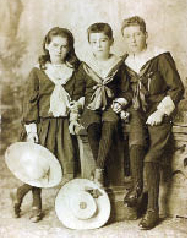
Ivy, Errol & Milton Knox
Approx. 1895
|
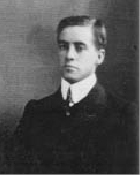
Joseph Milton Knox
Approx. 1902
|
|
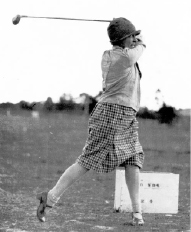 Ivy Knox
Ivy Knox
|
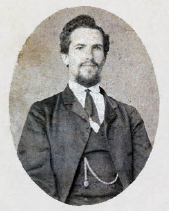
Possibly John Calvin
Approx. 1902
|
|
|

Joseph Knox Park, Pendle Hill, Sydney
Tom Fearby, great grandson of Joseph
& Elizabeth Jane nee Drew
|

Janet & Tom Fearby (great
grandchildren of Joseph Knox)
on Knox Street, Pendle Hill, Sydney.
The street was named after Joseph Knox
who had a house and orchard running onto
Knox Street.
|
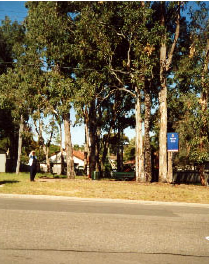 Val Fearby at Knox Park
Val Fearby at Knox Park
|
Peter Knox, when writing his
account of
the family, had learnt through Bill Fearby that Joseph
appears to have started work as an upholsterer when he arrived in
Sydney and then switched to working in the grocery section of a
department store called Civil Service Stores in central
Sydney.
Peter
Knox wrote, “On
13 June 1870, aged 25, he married my grandmother, Elizabeth Jane Drew.
On the Drew’s side the links with Australia go back, through marriage,
to the very early days of settlement there.”
Elizabeth’s mother, born Annie Reese, my
great-grandmother, was born in New South Wales on 16th January 1821. She was of Welsh descent
and must have been quite a character. Great-grandfather
Drew took himself off to California to join in the gold rush there in
the late 1840s. Apparently he sent one letter saying that he would be
returning to Australia and was never heard of again. Annie worked as a
midwife to bring up Elizabeth and her two brothers. They lived in Surry
Hills close to the centre of Sydney. As she grew up Elizabeth worked for a
dressmaker.
It
was in Surry Hills at 13 Edward Street, that Joseph and Elizabeth set
up home after their marriage in 1870. Grandfather Joseph seems to have
prospered as the colony of New South Wales grew in importance and
Sydney asserted itself as the main town in Australia. He used his
knowledge acquired in the Civil Service Stores to set up his own
grocery shop in Forest Lodge, still close to the city centre. For at
least one year in 1871 they were living in Rose Lane, off Campbell
Street in Sydney. We
know this because that is the address shown where Lilian Violet was born that year.
It is interesting to note that both Andrew Knox, cousin of Joseph and
Andrew McCrea another cousin of both Andrew and Joseph were also living
at Campbell Street, having apparently moved from Charles Street.
Miss Fearby reports “he must have done
very well, as he bought seven houses in the locality of Forest Lodge (or Glebe) and rented them.” The properties
appeared to be at:
|
87 Hereford Street
111 Hereford Street
94 Hereford Street – Joseph Knox’s grocery
shop.
10 Creek Street
12 Creek Street
167 Wigram Road
177 Wigram Road
|
|
By
1874 Joseph and Elizabeth were living at 95 Hereford Street in Glebe
next to their grocery store. This can be gleaned from the birth
certificate of their son John Calvin. The electoral rolls show this
address in 1878 and they were still there in 1893 as indicated by the
address written in the old hymn book of Lilian Violet Knox dated
January 16, 1893.
Grandfather
Joseph had ambitions beyond the grocery trade and in the early 1890’s
bought nine acres of land at a place called Wentworthville, close to
Parramatta, 15 or 20 miles west of Sydney,
and had an eight-room house built on the property, which he and
Elizabeth called Montargis. This was no classic Australian weatherboard
house with a tin top. It was built of bricks and boasted a slate roof.
Joseph had done well. The location of Montargis is now 54
Binalong Road.
The
first document we have from Montargis is the marriage of Joseph’s
eldest daughter, Lilian Violet Knox to John Thomas Fearby. This
marriage took place on October 5, 1896 and was performed by the Reverend John Paterson Minister of St. Andrew’s Kirk Parramatta.
His name appears on
many later Knox family birth, marriage and death certificates.
George Watson Drew, Lilian’s uncle and Aurora Myrtle Knox, her younger
sister were witnesses.
Joseph had planted an orange orchard and
a vineyard.
He farmed the land for a time and, according to Miss Fearby, made grape
and orange wine, which he sold in bulk to a wine merchant. We assume he
must have planted these orchards early in the 1890s because the second
document we have from Montargis is from a certificate dated January 20,
1897 when Joseph got the results from “The Viticulturist”, in Sydney
for his Orange Wine.
As he grew older he worked the property
less and lived off the rent of the shop and of the houses in Sydney.
Joseph and Elizabeth Knox had raised a
large family -
three sons and four
daughters (the fourth son, Haldane Leslie Hillas died at 1
½ years old). The sons were my uncles Joseph Milton Hoskings, John
Calvin and my father Errol. The daughters were my aunts Violet, Myrtle,
Renee and Ivy. My father was the youngest of the eight. In my early
upbringing in Sydney, I knew all these uncles and aunts except for
Joseph Milton, who died relatively young leaving a widow anda daughter,
Margaret, much older than myself. We saw them only very occasionally.
This is how my father, Peter Knox, remembers his aunts
and uncles.
Violet
Violet
was the oldest of the girls and, I suspect, my father’s favourite
sister. She married a farmer called Fearby and settled in Uralla in
northern NSW. She
had a son, Alan, and daughter, Heather (who provided the information
about early family history). Alan became a farmer and had children, at
least one of whom also farmed in NSW. Violet
was very hospitable. My father spent holidays with her as a boy. My
sister, Titia and I also went to Uralla for a holiday in the early
1930s.
John
Calvin
Always known to us as
Uncle Cal, he
belied his puritanical name and was a gentle character. A
schoolteacher in the public (state) school system he was assigned to
country schools and was a rare visitor. I cannot recall his wife but he
had one son, named Errol like my father. Errol was deaf as a result of German
measles as a young child and had impaired speech. To my knowledge he
had no children.
Myrtle
Myrtle
was a soft, kindly woman. She worked in an office in Sydney and until
she married, relatively late in life, always bought weekly comics for
Titia and me. Her husband was a civil servant called George Walker. On
marriage she moved from our neighbourhood and she and George lived in a
small flat in the then respectable Kings Cross area. George loved Rugby
League and until we moved to Melbourne in 1938 Titia and I occasionally
had lunch with them and were then taken to a League match.
Renee
and Ivy
Renee (I believe she had
a flower name
like her sisters -
Acacia)
and Ivy were the two youngest sisters. I put them under the same
heading because they lived together most of their adult life. They
never married and, to my knowledge never worked. They must have
inherited the income from the houses owned by their parents and they
appeared to live reasonably well. They played bridge and gave tea
parties. Ivy played golf and did most of the housework. Renee played
the piano and read books aloud while Ivy prepared the meals. They had
the top floor flat in a four-storey apartment block in Neutral Bay
about half a mile from our house. On one side it overlooked Sydney
Harbour. On the other it had a commanding view of the road. They were
not close to my mother. However, they tried to be good aunts and my
sister Titia and I sometimes went there for afternoon teas. Ivy
encouraged my golf and initiated me to two or three courses.
In order to complement my father’s work:
the following is the actual information obtained from Australian
records:
Lilian Violet
-
born 28th April 1871 at Rose Lane off Campbell Street. She married John
Thomas Fearby October 5 1896 at Montargis, Wentworthville. She died 4th
September 1933. They had two children:
i. HEATHER ORIEL FEARBY, b. 22 May 1899,
Rocky River, Uralla; d. 20 Nov 1999, Gunnedah.
ii. ALAN ROY FEARBY, b. 10 Nov 1901, Rocky River, Uralla, NSW; d. 24
May 1973, Tamworth, NSW; m. MILDRED JOSEPHINE COCHRAN, 10 Jul
1939,
Danlo, Gunnedah; b. 13 Nov 1906,
Gunnedah, NSW; d. 12 Mar 1996, Gunnedah, NSW
John Calvin -
born on
February 4th 1874, Hereford Street Glebe, died 5 Feb 1935 aged 61,
Dilah Creek,
Dungowan Narrabri. Married Mary Isobel MacLean (McKean) 1902. He had
one son, Errol Leslie who was born in Tamworth in 1902 and died 14th
December 1969 at 124 Barwan Street,
Narrabri.
Aurora Myrtle -
born on
29th
June 1876 and married Harry Charles Walker in Rosebery, Woollahra in
1931 (this appears wrong – it states she was 40 at time of marriage
indicating she got married in 1916). She died on 9th
March 1944 at Manly District Hospital. At the time she and her husband
were living at Flat 2, Camberene, Victoria Parade in Manly NSW. They
had no children. Myrtle was
also known as Anora.
Haldane Leslie Hillas - born 15th January in
Hereford Street Glebe, 1879
died September 30 1880, Hereford Street, Glebe aged 1 ½ yrs.
Acacia Renée (also documented as Renée
Acasia) - born
15th July 1881 in Hereford Street, Glebe - unmarried, died 15th April
Lanchester Private Hospital, Cremorne, aged 59 years – at the time
sister Ivy and Acacia were living at 4 Rycroft Hall Shellcove Road,
Neutral Bay. Renée was also known as Bem.
Joseph Milton Hosking - born
27th February 1884 Hereford Street Glebe,
died 12 Oct 1921 aged 37 years, “Omah” Rochester Street Homebush.
Married Ida M. Dawson 1913. They had one daughter Margaret Elizabeth born February 15, 1917.
Milton was also known as Milt or Stripes.
Ivy Jasmine Gwendoline - born 30th October 1886, Hereford
Street, Glebe – 1886.
Unmarried, died 23rd June 1959, 4/17 Shellcove Road, Neutral
Bay. Ivy was also known as Dar.
Errol Aubrey Galbraith - born 25 June 1889
Hereford Street
Glebe, Woodend, Victoria. He married September 4,
1919 Gertrude Mary, daughter of George Barnard Milbank Coore
(see separate page). Brigadier
Sir Errol Knox M.B.E died 17
October 1949. Errol was also known
as Pinker, Knocker, Bill.
JOSEPH
AND ELIZABETH JANE KNOX AS PARENTS
What
sort of a family life did Joseph and Elizabeth Knox create for their
children who grew up in the latter part of the 19th century? My father
did speak occasionally of his boyhood and, although I cannot recall my
aunts discussing their upbringing, their adult way of life provides
certain pointers to the past.
One
thing is clear. Joseph was a true product of the Presbyterian sector of
Ulster and the Sabbath was sacred. I can recall my father, Errol,
saying that he was not allowed to play on the grass on Sundays --
presumably because such pleasure distracted from strict observance of
the sacred day -- and was not allowed to enjoy himself on Saturday
evenings because “it was too close to the Sabbath.” Church going and
biblical readings were a duty on Sunday. I am sure that Elizabeth was a
good and virtuous mother. My father spoke fondly of her. However,
it must have been a rather sombre house with strict rules.
Joseph
and Elizabeth obviously saw to it that the family was as well educated
as the state system of the day allowed. They must have encouraged study
and a sense of discipline. The
sons
were all groomed for what would be called today “white-collar” jobs.
The Knoxes did not aspire to being part of Sydney society but were well
regarded in the Wentworthville area and neighbouring Parramatta. There
was enough money for the girls to be able to develop desirable
Victorian social accomplishments like music and embroidery. None of the
family showed any great skill at sport and one must doubt that it was
encouraged.
My
father, Errol, was clearly required to work on the small farm. He must
have enjoyed it because all his life he had a great love of working the
land and, in the way of farmers, was quite skilled with elementary
mechanics and could turn his hand to building a brick wall, working
with cement or mending a car or yacht engine. One
imagines that in the fashion of the day his sisters were made to work
around the house. I never heard my father talk of holidays except to go
and stay with his married sister Violet on her farm. He was not a
strong swimmer and I do not think that the Sydney surfing beaches
played any part in his early life.
Joseph
and Elizabeth were loyal subjects of the crown. My father told me how
he was taken to the celebrations of Queen Victoria’s jubilee. At the
same time there is no indication that they had any close links with the
“mother country.” Joseph never went back to Ireland nor seems to have
urged his children to do so.
They
seem to have very much identified themselves as Australians. My father
told me that as a schoolboy he participated in the celebrations in 1901
when Australia shed its colonial ties and became an independent country
within the British Empire. Except for him, none of the family left
Australia and to the best of my knowledge, never even left New South
Wales. Indeed, in many other ways my father, the
last-born, differed from his brothers and
sisters. Whereas they, with the exception of Violet, who married John
Fearby, were content with a secure lifestyle, conforming to the rigid
social pattern set by the parents,
Errol was a restless spirit, blessed with a first class brain, a depth
of vision and a desire to see the world outside Australia.
THE
MONTARGIS YEARS 1893 - 1925
Joseph and Elizabeth Jane Knox
Errol Aubrey Galbraith Knox - the early years
As
Peter Knox wrote, Joseph Knox built Montargis at what is now 54
Binalong Road, Wentworthville in the early 1890’s. Even though the
family was still living at 95 Hereford Street in Glebe in 1893,
Joseph’s orchards may already have been bearing fruit by then. There
are two reasons to believe this. The first evidence, as mentioned
earlier, is that at his daughter, Lilian’s, wedding on October 5, 1896
he refers to himself as an “orchardist” and by January 20, 1987, he
received an official letter from the Department of Mines and
Agriculture, addressed to Joseph Knox, Esq., Montargis, Wentworthville
from the Viticulturist, who wrote a detailed analysis of the orange
wine, “the analysis confirming the tasting as a good orange wine.”
From
the very informative book “The Toongabbie Story” by Doris Sargeant” we
learn further about Joseph’s interest in wine, and the book states that
the “whole of his first vintage was acquired by a Co-operative Society
in Sydney.” Later on it was sold to a D.D. Henderson of Parramatta, a
well known Parramatta Bowling Club personality.” The “Toongabbie Story”
further gives us a glimpse into Joseph Knox’s skills in the Toongabbie
Debating Society, which was “very active in the 1890’s, frequently
making journeys to surrounding centres to take part in debates.” Mrs.
Sargeant further reports that “he took a leading part in activities of
St. Mary’s Church as did his daughter, Ivy. Son Errol was noted for his
work with the First Toongabbie Scout Troop. He became a Major in the
First A.I.F. (Australian Imperial Force).
There
are two references to Ivy Knox in “The Toongabbie Story.” However, Ivy
Jasmine was not born until 30th October 1886, so it is unlikely she was
the daughter involved in the Debating Society – very likely this would
have been her older sister Lilian Violet. Janet Fearby does not believe
that either her grandmother or her sisters made the trip to Europe with
a casket of oranges that was referred to in the book.
The
reference to the Knox family worshipping at St. Mary’s Church was also
puzzling as they had always listed themselves as Presbyterian. However,
Kevin Hilferty, an authority on New South Wales history, pointed out
that there had been a Presbyterian minister at Toongabbie in the early
days of settlement. Apparently there was no further presence until the
early 1900s. Perhaps that is why in 1896 when Lilian Violet married
John Thomas Fearby at Montargis, the marriage ceremony was performed by
John Paterson, Minister of St. Andrew’s Kirk, Parramatta. Undoubtedly,
though, the Knox family contributed greatly to Parish activities.
When
Joseph Knox moved to Montargis with his wife and seven children (they
had lost little Haldane Leslie Hillas aged 1 ½ years in 1880) they were
quite a large household. The household included Joseph’s sister Sarah,
otherwise known as Aunt Tare and Joseph’s mother-in-law, Annie Drew
(nee Reece). Annie’s husband George Drew had taken off to the goldmines
in California in 1849 or thereabouts. Aunt Tare appears to have lived
with her brother and sister-in-law from her early days of immigration
in 1865.
Perhaps
the photo of the three children Ivy, Errol and Milton was taken at
their sister’s wedding in 1896 at Montargis. Most of the current
photographs available of the Knox and Drew family are all taken during
those happy days at Montargis.
The 1st Toongabbie Boy Scouts
We
know that in 1908 the 1st Toongabbie was formed and Errol Knox,
Joseph’s youngest son had played a very large part. According to “The
Toongabbie Story” The Scout Hall was in an old barn at Montargis and
there were parades in Willmot’s paddock. It states further “We were
second only to Mosman Troop to form in Australia, and with them had the
first Boy Scouts camp at La Perouse.” In 1909 Errol Knox was the
Toongabbie leader and Scout Master. From papers filed with the AIF, it
appears that Errol Knox is listed at Sydney University Scouts for 2
years 6 months around this time.
There
is a further reference to ‘Knocker’ (Sir Errol Knox) – that refers
to the Toongabbie Boy Scouts in the famous book by Professor A.R.
Chisholm-Australia, Men were my
Milestones. Australian Portraits and Sketches
- Melbourne University
Press.
In
this book Chisholm writes - We went to a geology camp in 1908, under
the command of W.G. Woolnough, and found ourselves allotted to the same
tent. The
scene of our geological searchings was along Barber’s Creek, in a
picturesque region not very far from Goulburn. The camp was one day
divided into two parties. One
explored the bed of the valley, the other scaled a razor-back mountain
in search of fossils. The afternoon moved on towards its close, and
Woolnough was becoming uneasy about the razor-back party, visible on
the mountain-top but so far away that communication seemed impossible.
Then Knocker stepped forward and took
command as he had done before in the debating club. He pulled out a
handkerchief, borrowed a
second one, and began to semaphore. Fortunately, someone at the other
end
knew the code, and Knocker proceeded to pass on Woolnough’s
instructions. I did not know where he had learnt signalling;
but I did know, from that hour onwards, that he was a man of action and
a born leader.
Peter
Knox wrote of his father - (Errol)
must have been bright because after primary school he qualified to
enter Fort Street High School, one of the two leading schools in the
New South Wales state system. My father was proud of his association
with this school which produced a number of prominent Australians. It
was situated close to the centre of Sydney and the harbour.
Since
the family by this time was living in Wentworthville it meant a long
train journey to school. My father, who had a good sense of humour and
a way with words, liked to recall that they had an old Irish conductor
who used to call out the names of stations “Road to Hell” (Rooty Hill),
“Go to Hell,” (Goats Hill) and “Went to Hell” (Wentworthville).
Chisholm wrote of this time period: …Somewhere towards the end of 1905
we formed, at Fort Street, a debating club, presided over by ‘Sammy’
Lasker, the deputy headmaster… That is the background on which
‘Knocker’ shot suddenly into my consciousness, to remain there for the
rest of my life. I forget what the subject of debate was that day. But
very vividly I remember a new boy - in short pants of course - who
stood up boldly, advanced to the table, and said: ‘Mr. Chairman, will
you please read out again the subject of the present debate?’ And while
Lasker complied, the new boy stood there with folded arms, looking for
all the world like a barrister getting ready to hurl a devastating
question at a witness. ‘Thank you, Mr. Chairman,’ he then said. ‘I
wanted the exact terms, and now I wish to point out this...and
this....and this’; and he proceeded to hammer the table and drive his
points home with all the aplomb of an experienced orator. Knocker was
always like that. It was not bumptiousness; simply an immense
self-confidence, tempered, as I learnt later, by a patiently mastered
and well concealed shyness.
From
Fort Street High he went to Sydney University to do a general arts
course. I know from a story he used to tell that one of his subjects
was philosophy. English must have been another because throughout his
life he could quote at length from various Shakespeare plays. He had a
strong memory. He stayed at University for two years and then abandoned
his course in 1910 to go into journalism. I do not know the background
to this decision. He was an impatient man and quite probably was bored
with being a student and anxious to make his way in the world. Perhaps
he needed to make money. His parents by this time were running down
their farming interests and living off their investments in property.
He
worked on newspapers in Sydney for three or four years. Then early in
March 1914 he went to California sailing on the Ventura to San
Francisco to work there for the Hearst chain. This was a period in his
life about which he often told us stories. I think he liked the United
States and the exciting future it offered. He might have stayed there
if the First World War had not broken out. Early in 1915 he returned to
Australia and in July enlisted as a private in the Australian Imperial
Force (AIF).
The War Years at Montargis
He was commissioned in September and
in January 1916 embarked for Egypt, a training ground for the
Australian forces overseas. From Egypt he went to France where, in
January 1917 he joined the Royal Australian Flying Corps. He had always
been fascinated by flying from its infancy - he was always forward
looking and embraced new idea with enthusiasm - and had witnessed some
of the first attempts at flight in Australia. His bad eyesight debarred
him from becoming a pilot but he told me he did some flying on
observation work. Essentially, however, he was an administrator and
served as a recording officer and as an adjutant. He was gassed and
also hospitalised for appendicitis. As indicated above it was while he
was recovering in England that he met my mother. By the end of the War
in November 1918 he had become a major. He served until July 1919 with
the British Army of Occupation on the Rhine. For his war work he was
twice mentioned in despatches and awarded the MBE.
|
Errol Knox - 1918
|
While
Errol was at war – Joseph received several letters regarding his son’s
health problems. Joseph always acknowledged and replied formally,
although he must have been extremely anxious about his son’s safety.
Sadly
it appears that after Errol left for the war he never saw his father
again, nor his aunt Sarah who died at Montargis September 22, 1918 aged
75. Joseph Knox died shortly after his sister, aged 73 years at
Montargis on February 6, 1919. On September 4, 1919 Errol married
Gertrude Mary Coore in Storrington England. He had met her while
recuperating in hospital. They returned to their new life in New South
Wales.
Errol’s
mother, Elizabeth Jane Drew died
at Montargis on February 23, 1925, shortly thereafter Montargis was
sold.
|

The door on 111 Hereford Street, Glebe
It could be one of Joseph Knox’s houses.
The houses were sold in the early 1960’s
to wind up Joseph’s estate.
|
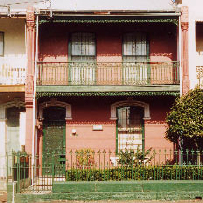
House on Wigram Street, Glebe
Possibly one of Joseph Knox’s houses.
Photo by Janet Fearby
|
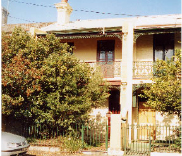
Wigram Street, Glebe
Could be on of Joseph Knox’s houses.
|
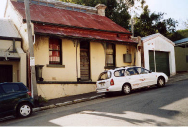 111 Hereford Street,
Glebe which could be
111 Hereford Street,
Glebe which could be
one of Joseph Knox’s houses.
|
Janet Patty Fearby
Janet
Patty
Fearby was born on August 8, 1940 to Mildred Josephine (nee Cochran)
and Alan Roy Fearby and had a brother, Thomas Knox Fearby, born January
4, 1942. Her early schooling was by Correspondence. She writes “ Our
lessons came from Sydney. I went away to Boarding School, May 1949. I
could not wait until I went away, BUT OH!! WAS I HOMESICK AT NIGHT for
the first term. I had never been away from my parents at all. I stayed
with Dar (Ivy Knox, my father’s aunt at Neutral Bay), from 1953 until I
left school at the end of 1957. I went home to my parents, as I had
been away for so long. We lived on our property until the 1970s when we
moved into my mother’s sister’s house which is mine now. My father,
Alan Fearby, died on 24th May 1973. Tom was married then but he came
out and did the farming and cattle work. At that time the cattle prices
had dropped and were very low. We joined the Junior Farmers. Tom won
the NSW P&O trip to the UK in 1968. He was joined by the other 5
state winners on the Arcadia and then came home on the Oronsay. We put
exhibits up at the local show and also at the Royal Show in Sydney.I
have seen a number of droughts and floods in my lifetime. We reared
many pet lambs and calves over the years. I loved being home with my
family and I have no regrets. I have looked afterMummy and Heather of
the later years. My mother was crippled up with arthritis but Bill had
really good health, except the last 10 yrs of her life when she got
dementia. She was in the Gunnedah Nursing Home for about 4 years. She
had her 100th birthday at the Home. She received a letter from the
Queen, our Prime Minister, the Governor of NSW, Governor General, our
State and Federal Members of Parliament. Dar still came and stayed with
us, after we left school but I think she fretted because she did not
have me staying with her. She became ill and Bill (Heather) Fearby
looked after her until she died in June 1959. We let the flat go but in
a way it was sad,because it was so handy to public transport”.
Janet
is
an
avid researcher of her family history and has contributed enormously to
these chronicles by providing photos, original texts and has spent
hours in libraries pouring over family documents.

Harold
Alexander behind his wife Margaret
nee Knox
(Daughter of Joseph Milton Knox) and her
2nd cousin Janet Fearby.
Margaret turned 90 on 15-2-2007.
Pictures at Montargis
The Knox Chronicles WILL be continued ...
This will include a full account
of Errol
Knox’s war years, his marriage, family and work.

Errol Knox
No. 3 Squadron
|
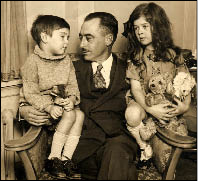
Peter, Errol, and Tisha Knox
|
Errol
Knox
France
World War I
|
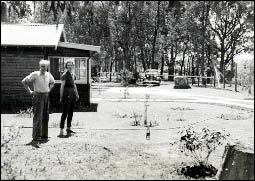 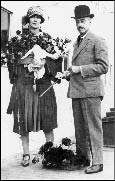
Errol and Gertrude Knox
|
For Further
Information Please Contact:
Jane Knox
Patria Productions
P.O. Box 344
Littleton, New Hampshire 03561 USA
janeknox@knoxetal.com
Tel: 603-444-6613
© Patria
Productions 2008
Contact Us | Site Map |



